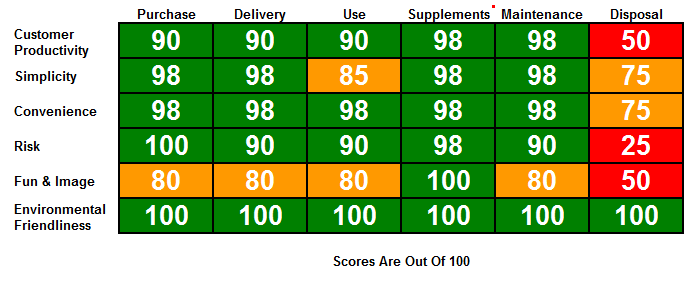Blue Ocean Strategy Formulation - The Four Principles Of Strategy Formation
This blog article is a summary of the book by W. Chan Kim and Renée Mauborgne. In this article you will learn the plan they outline for how to make your competition irrelevant and have sales and profit growth in excess of anything you thought was even possible. Click the link above or the picture below to read more.
Start From The Start
If you have not read the first article in this series click here to go to the first article titled "Blue Ocean Strategy Summary"
Executive Summary
- the four steps to a create a blue ocean strategy are to create uncontested market space, focus on the big picture, reach beyond existing demand and focus on getting the strategic sequence right
- creating a strategy canvas is a great tool to use to create blue ocean market opportunities
- to visualize your strategy you should first see where you are currently, then determine how others see you, then visualize where you could be then draw a map for everyone of where you want to go
Click here to get training on how to create a blue ocean sales & marketing strategy.
The Four Principles To Of Blue Ocean Strategy Formulation
1. How To Create Uncontested Market Space By Reconstructing Market Boundaries
The book suggests you need to look at what the market is doing and competing on and create a strategy that is vastly different than that of the rest of the market. It suggests using the eliminate, reduce, raise, create framework outlined below to develop a strategy that will create uncontested market space. Basically this approach is decreasing the focus on characteristics of a product that can be reduced and increasing the focus on product characteristics that a portion of the market would value but can currently not find at this higher level.
The book suggests one tool to help in the process is to construct a Strategy Canvas (click here to learn more).
2. Focus On The Big Picture
The idea from the book in this section is that most strategies include a large amount of data analysis and numbers that the actual strategy is lost. Instead the book recommends focusing on understanding what the customer wants, understanding what the current marketing is providing and what the current market is not providing that is wanted. The idea is that this will lead to idea for blue oceans and it is too difficult to put exact numbers on the size of a blue ocean. Instead of focusing on the numbers, the book suggests it is more important to focus on the strategy that will be successful.
3. Reaching Beyond Existing Demand
For this section the book suggests that a company should be focusing on how to get potential future customers that are not currently purchasing from the market for one reason or another. The book suggests focusing on understanding what is keeping potential customers out of the market and work to solve this is where the really large growth potential is.
4. Getting The Strategic Sequence Right
In this section of the book it suggests you need to walk all the way through 4 key steps to ensure the strategy is valid. The first is looking at the buyer utility to make sure the proposed service/product has good utility at every step of the buying process (Purchase, Delivery, Use, Supplements, Maintenance, Disposal). See the below chart for a sample. The book suggests you complete a buyer utility map at this step and confirm that The second step is price, is the price a good value to the purchaser. The third step is cost, can you sell it at a cost that allows for good profits. The fourth step is adoption, what are the adoption hurdles for retailers, partners and customers and how will you over come them.

Click here to download a copy of this Product/Service Utility May.
The 4 Steps Of Visualizing Strategy
1. Visual Awakening: See Where You Are
Get a clear sense of where you are in terms of what you actually offer and how that compares to your competition.
2. Visual Exploration: See How Other See You
Get a sense for how your customers, suppliers and competition see you. Use feedback and research methods such as surveys to determine this.
3. Visual Strategy: See Where You Could Be
Work on brainstorming and visualizing where you could be using the strategy canvas and the 6 boundaries of competition framework.
4. Visual Communication: Draw A Map For Everyone
Draw a map for your staff showing how you will move from where you are currently to the new place you are going to. Think about being a pioneer that is migrating and then settling.
Click here to download the Blue Ocean Strategy Summary PDF.
Blue Ocean Strategy ROI
Click here to see what kind of ROI companies get that use the blue ocean strategy
Read The Next Articles In This Series
1. Blue Ocean Strategy Summary - Click Here To Read This Article
2. Blue Ocean Strategy Formulation - You Are Reading This Article
3. Blue Ocean Strategy - The Strategy Canvas - Click Here To Read This Article
4. Blue Ocean Strategy Execution - Click Here To Read This Article
5. Blue Ocean Strategy Examples & ROI - Click Here To Read This Article
Sources For This Series
To see the sources for this article series go to the first article in the series titled "Blue Ocean Strategy Summary".
